By LISA EISENHAUER
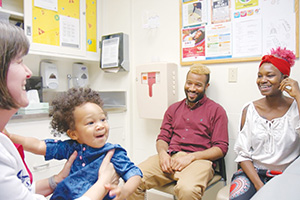
Dr. Heidi Sallee, a pediatrician at SSM Health Cardinal Glennon Children's Hospital in St. Louis, talks with a young family. The family is featured in a video that is part of CHA's Medicaid Makes It Possible campaign.
Statistics show a troubling trend for children nationwide: more of them have no health insurance.
After falling to 4.7% in 2016, the percentage of children without health coverage ticked up to 5.7% by 2019, according to an annual analysis of census data done by the Center for Children and Families at the Health Policy Institute at Georgetown University. The change means that the number of children on public or private insurance rolls shrunk by about 726,000 children over three years.
Experts like those who do the analysis for Georgetown fear that the number for 2020, which won't be known before this fall, could show a sharp spike because of the loss of jobs and employer-provided
insurance due to the coronavirus pandemic.
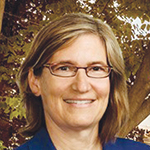
Alker
"It's extremely troubling. We knew the number was going in the wrong direction," said Joan Alker, who co-authored the analysis. "We've known that for a couple of years, and of course the pandemic has so many negative consequences for children and everybody in our society."
Impact beyond families
As executive director and a co-founder of the Center for Children and Families, Alker has spent years documenting how factors like access to health care improve the lives of children and families. Children without insurance, for example, are more likely to suffer from chronic but treatable conditions like asthma.
The effects of that illness can spiral beyond just the children's health, Alker said. It can affect their education by causing them to miss class time and lose ground in their studies. It can affect their parents' financial stability if the family's only option for medical treatment is emergency care, which can carry steep charges.
The strain eventually extends to the rest of society as children and their families struggle, Alker said. "That's why we need to make sure all children are covered and they are covered continuously."
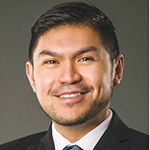
Pontemayor
CHA has made children's health care coverage one of its advocacy focuses. Paulo Pontemayor, a CHA director of federal government relations, said the organization is working with others, including the Children's Hospital Association and the American Academy of Pediatrics, through the Partnership for Medicaid to raise awareness of how many people the program serves and to lobby for easier access.
"We know that healthy mothers, healthy babies, healthy children and healthy families equal healthy communities," Pontemayor said.
He and Alker pointed out that for decades providing access to health care for children had been a bipartisan priority, but it seemed to have become less of a concern under the Trump administration. "We just need a kind of renewed national commitment to how important this is," Alker said. "I'm heartened that the new administration has made health insurance a critical piece of what they ran on."
Range of causes
Funded jointly by the federal government and states, the Children's Health Insurance Program is administered by states in accordance with federal rules. CHIP provides insurance through Medicaid and through separate CHIP programs. These government programs combined provide health coverage to more than one-third of the children in the United States. Government figures show that as of September Medicaid enrolled about 30.8 million children and CHIP about 6.6 million.
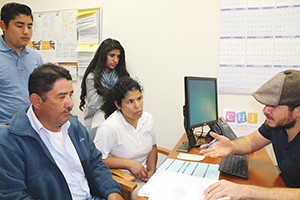
A staff member at Community Health Initiative Napa County in California discusses insurance options with a family. The nonprofit works with Providence St. Joseph Health and many other partners to help clients access health care and health insurance.
The analysis Alker co-authored found that from 2017 to 2019, Medicaid and CHIP coverage of U.S. children dropped by almost 1 percentage point. The analysis blames that decrease on a range of causes, including cuts in outreach and enrollment assistance, efforts to undermine the Affordable Care Act, a chilling effect from the Trump administration's public charge regulation that discourages the use of public safety net programs by immigrants, and red tape barriers that make enrolling and staying enrolled challenging.
Confusion and red tape were the reasons cited for a drop in about 100,000 children from the Medicaid rolls in Missouri from mid-2018 through 2019. As the state changed its verification requirements, it removed ineligible adults from its public health insurance rolls as well as their children, many of whom remained eligible for Medicaid or CHIP programs.
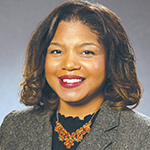
Griffith
"I think it may have been a combination of factors. Some parents moved out of state, and some probably didn't realize that they had to reapply for children who still qualified," said Deidre Griffith, regional director of community health for SSM Health.
Griffith said the situation has been rectified in part by outreach to families from community-based assisters and in part because of federal financial incentives and policy changes to Medicaid put in place during the pandemic. The number of Missouri children enrolled in public health insurance had climbed to a record of 633,000 by the end of last year, according to state figures.
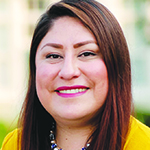
Gonzalez-Mares
Reaching out to families
Elba Gonzalez-Mares sees firsthand the hurdles that families in need of health care coverage face. She is the executive director of the Community Health Initiative Napa County in California, a nonprofit organization that was established in 2005 to help children and their families get coverage and services.
Her agency works with several partners, including Providence St. Joseph Health, to see that children and families have access to health care. It currently has a caseload of 14,000; of those, 60% are children.
"After 15 years of doing this, we have families that have gone through four different changes in their coverage," Gonzalez-Mares said. "Helping them transition from one to the other was not an easy task, but avoiding that break in coverage is just so important. Families can get lost in that transition very easily because it does get overwhelming."
California offers health insurance programs for all state residents up to the age of 26, even those who because of their immigration status don't qualify for Medicaid coverage. Gonzalez-Mares said language and cultural issues leave many families unaware that they can get coverage and of how to enroll.
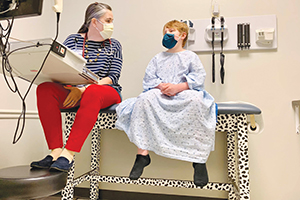
Dr. Heidi Sallee talks with a patient at SSM Health Cardinal Glennon Children's Hospital earlier this year in a photo captured by the boy's mother. SSM Health hospitals have staff and programs that help families secure health insurance and access care.
Some immigrants who are eligible for public health care coverage in the state fear that applying will have a negative impact on their quest for a green card, which bestows permanent legal residence status, or citizenship aspirations. Her agency helped create clear talking points about the public charge rule so that counselors can confidently and correctly advise immigrants on their rights. (See sidebar.)
Since the onset of the pandemic, Gonzalez-Mares said the Community Health Initiative Napa County hasn't had a sharp increase in its caseload. It has, however, seen its casework increase as more clients who were laid off or otherwise lost income need assistance revising their enrollment information and figuring out how to retain health insurance.
Bucking the trend
Even with California's broad public health care programs, the number of
children in that state who have insurance coverage has dipped as it has in almost every state. The Georgetown analysis shows that the only state that has consistently bucked the national trend in the last three years is New York.
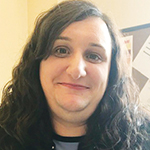
Zapotocki
Melissa Zapotocki is director of Community Health & Well-Being with St. Peter's Health Partners in Albany, New York, part of Trinity Health. "I know in New York and within St. Peter's that we do a pretty good job in trying to ensure that all children are signed up and enrolled in some sort of health insurance coverage," she said.
She is one of about six certified applications assisters at St. Peter's who are trained to help people enroll in New York's health care marketplace, NY State of Health. The state takes a proactive approach to health insurance, Zapotocki said, promoting its exchange and providing support for community-based organizations that can help residents enroll in insurance as well as other social safety net programs such as supplemental nutrition assistance.
Zapotocki said St. Peter's sees helping provide access to health insurance as part of its Catholic mission. "We strive to be a compassionate, transforming healing presence in our community and we're committed to providing health care services to all patients and especially the poor and vulnerable and the most in need," she said.
Texas-sized coverage gap
No state has more uninsured children than Texas. Data compiled by the Texas Medical Association put the figure at 11%, or 1 million children. At least 350,000 of those children are eligible but not enrolled in Medicaid or CHIP, according to the nonprofit public policy institute Every Texan.
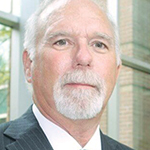
Born
Christopher M. Born, president of Dell Children's Medical Center in Austin, Texas, said his hospital spent $11.5 million on the care of uninsured children last year. Dell Children's is part of the Ascension Seton regional system.
Over the next two months, Born said Ascension hospitals across Texas are launching a financial counseling effort to provide patients or their parents with immediate assistance and information about the insurance options and financial aid they qualify to pursue. Financial counselors will be available on-site and by phone and will contact patients as needed to complete follow up.
Insuring all children will give every single child access to health care regardless of their zip code, ethnicity, or their parents' income, Born said. "More importantly, it will improve the overall health of our community."
Talking points clarify public charge rule for visa holders
The caseworkers at the Community Health Initiative Napa County in California weren't alone in seeing how the Trump administration's enforcement of the public charge rule was discouraging undocumented residents from seeking needed services like health care and health insurance. Interpreting the rule was so fraught that many staffers at social service agencies didn't even know what advice to offer.
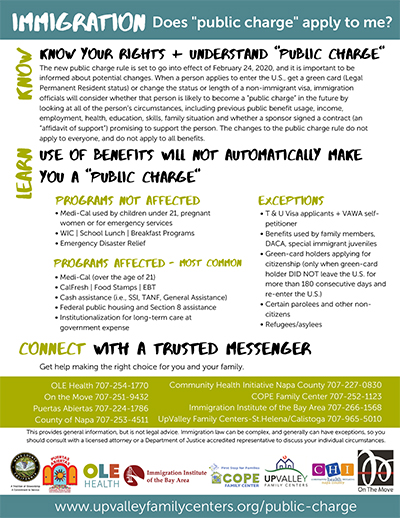
A flier used by the Community Health Initiative Napa County and other agencies in California that work with immigrants offers talking points on how to handle questions surrounding the public charge rule. The flier is available in English and Spanish.
"They were afraid that they were going to tell somebody something incorrectly that could potentially harm their legal status and change their life forever," said Elba Gonzalez-Mares, executive director of the nonprofit Community Health Initiative. "It's such a delicate topic."
That's why her agency joined others and, with the help of immigration lawyers, crafted and distributed a flier with a clear set of talking points to use when counseling undocumented residents. The flier is in English and Spanish.
The flier explains that when immigrants or visitors apply to enter the United States, become a legal permanent resident, change their immigration status or extend their nonimmigrant visa, immigration officials will consider whether they are likely to become a "public charge" and receive tax-funded safety net services and health insurance in the future. The review will include public benefit usage, income, employment, health, education, skills, family situation and whether a sponsor signed a contract promising to support the person.
"The changes to the public charge rule do not apply to everyone, and do not apply to all benefits," the flier says. The benefits that it does not apply to include school lunches, emergency disaster relief or Medi-Cal, California's Medicaid program — but that exemption is only for children and young adults under 21, pregnant women or for emergency services.
The flier includes several phone numbers undocumented residents and those who work with them can call to get more specific assistance.
Gonzalez-Mares said her agency has used the talking points in combination with other training, such as simulations involving confused clients. "We even had a mental health provider give us some talking points on how you defuse that fear when the client's calling you, because it's a lot of fear," she said.
Gonzalez-Mares said the goal of agencies like hers is to let clients know staff is there to listen to, support and help them. "But we also want to make sure they're making the right choice by having the right information in front of them," she said.
— LISA EISENHAUER